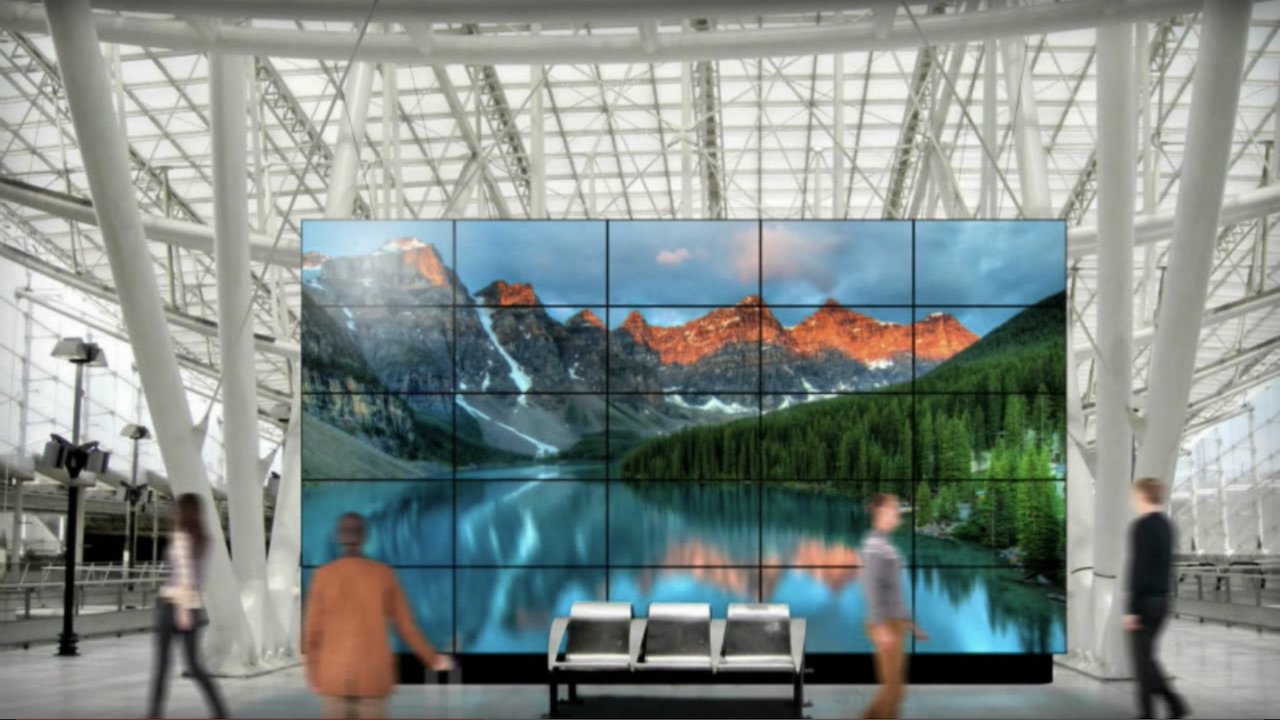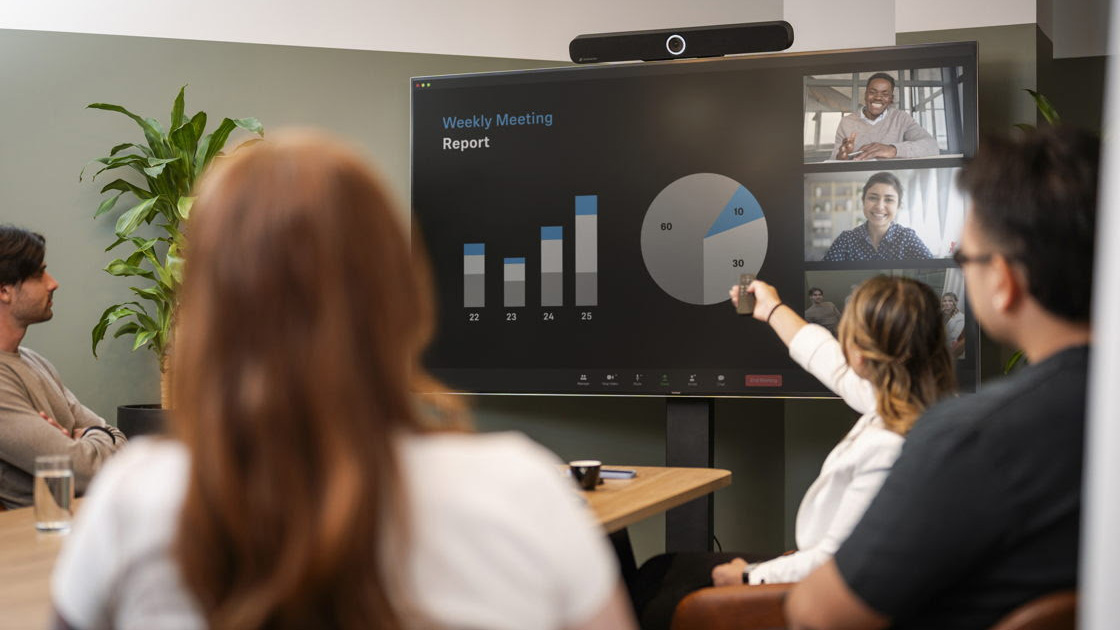New Video Technologies Increase Enterprise Efficiency and Reduce TCO

As enterprises look for new ways to improve productivity and reduce costs, one area rapidly growing is the more strategic use of video and visual communications—in everything from accelerating the customer ordering process to enhancing collaboration among employees and improving security around sensitive areas. Communication occurs through video walls, digital signage, high-performance dashboards, and related form-factors. Effective, efficient deployment of video and visual solutions can significantly increase operational efficiency and reduce total cost of ownership (TCO), while delivering high-quality visual experiences.
[2020 Outlook: Digital and Physical Retail Strategies Merge to Enhance Consumer Engagement]
As a proof point, McDonald’s announced in 2018 that it will spend $6 billion on refurbishing most of its 14,000 U.S. stores, its largest overhaul to date. A portion of these funds will be devoted to updating visual communications, including installing digital kiosks for ordering, customizing, and paying for meals and updated digital menu boards for in-store and drive-thru lanes. McDonald’s will also update kitchen display systems behind the counter to streamline order fulfillment for increased customer satisfaction.
Enterprises typically fail to grasp the potential of optimizing video and visual communications for one or more of the following reasons:
- Management teams look at video as a series of spot solutions, such as for the control room, customer engagement, or operations. They fail to think about video as an integrated, enterprise-wide opportunity.
- IT teams have taken on the AV function that was previously managed by a separate AV team. As such, they may have less experience and/or resources to identify and deploy optimal video and visual communications solutions.
- The organization has deployed video/visual communications solutions with technology that is now outdated but fails to see the benefit of updating its capabilities to new solutions, such as AV-over-IP.
- Past solutions have fallen into one of two buckets: the first is complex, expensive solutions that require high deployment and maintenance costs and the second is low-end solutions that have proven unreliable and/or unstable.
- Three trends are now lowering barriers to enterprise-wide video and visual communication adoption: the increasing number of relevant uses, the performance enhancement of these solutions, and the lowering cost and technical expertise required for deployment.
First, SaaS has taken the enterprise world by storm and created new efficiencies and opportunities for collaboration in areas such as process automation and operational productivity. SaaS also reduces operating costs by removing networking friction, like working with outdated versions of software and relying on expensive and often inefficient hardware. Gartner predicts the SaaS market will grow 17.9 percent to $185.3 billion in 2019.
At the same time, video and visual communications are growing rapidly across different markets, ranging from healthcare to hospitality, manufacturing, telecommunications, and more. Rapidly growing enterprise functions include control rooms, meeting rooms, executive data visualization, manufacturing/logistics, and other areas. Cisco reports that by 2022, 82 percent of all IP traffic will be video, up from 75 percent in 2017. Global video IP traffic will grow fourfold between 2017 and 2022, for a CAGR of 29 percent. Improved performance and speed of display computing, corporate networks and the cloud, as well as lower costs are driving this growth. For example, the ASP per port for a 10-25Gb Ethernet connection has dropped by approximately 50 percent in three years.
A third trend, AV over IP, continues to proliferate as well—AV-over-IP is defined as building video and visual communications capabilities over existing voice and data networks as opposed to creating distinct AV networks. Futuresource Consulting notes that shipments of AV-over-IP related equipment rose 60 percent in 2018.
A daily selection of features, industry news, and analysis for AV/IT professionals. Sign up below.
Until recently, even in AV-over-IP architectures, video and visual communications solutions have relied on an abundance of hardware, bucking the SaaS trend. This hardware includes, but isn’t limited to media players, thin clients, cables, and extenders. These hardware components can be expensive, unreliable, and often become obsolete quickly.
Today, a new breed of video and visual networking solutions is emerging that builds on the SaaS and AV-over-IP trends and enables enterprises to more aggressively incorporate video into everyday operations.
While the needs of each enterprise are unique, when researching solutions to create a video and visual communications platform, there are specific features enterprise teams should consider that will help them maximize the ROI of their investment:
The solution should enable enterprise IT teams to obtain content from any source—in-house PCs and servers, live feeds, and the cloud—without the deployment of additional hardware. The solution should also be able to handle content in multiple formats for use in applications as varied as control rooms and digital signage.
At the edge, software embedded in smart displays should replace thin clients, media players, cables, extenders, and other hardware. The software should also enable advanced features such as the creation of zones, scheduling, cloud storage space, display synching for video walls, and more.
The solution should be able to handle video and visuals of unlimited resolution and scale to support as many displays as necessary; in some deployments, this can be more than 100. Enterprises should ask solution providers to demonstrate and quantify significant improvements in operational efficiency and in reducing TCO.
The solution should be scalable for a wide range of enterprise communication needs. These can range from streamlining operations on a factory floor, sharing data for executive teams, managing control rooms, facilitating collaboration among teams in multiple locations, engaging customers that visit an office or retail location, and many more. Management teams should also consider more innovative uses, such as offering telehealth services to their employees.
To illustrate the potential of advanced visual communications, below are three use cases where digital signage, video walls, and advanced display solutions streamline operations and save budget:
A public transport agency deploys digital displays in its control room to monitor its bus, streetcar, and/or light rail fleet, while adding standalone displays across its offices for corporate communication and installing another video wall at its customer service office for customer announcements, digital signage, and real-time messaging. All content is managed centrally from HQ and powered by the same solution.
A multinational manufacturing company deploys digital displays at its factories to monitor activities such as production processes and inventory control, as well as data visualization displays in its corporate and plant offices to facilitate collaboration among managers located worldwide. All these displays are powered by a single solution, thus interconnected, so they can easily share content (i.e., an executive at HQ in Arizona can monitor production of a factory in Michigan) and push content simultaneously to all displays worldwide from the cloud.
An airline reorganizes its marketing promotions and pushes different promotions to different airport lounges based on passenger demographics and each airport’s role in the airline’s overall flight structure. Lounges at large hubs receive one set of promotions, lounges in regional hubs see another set and smaller, less-trafficked airports receive yet another. This strategy is managed and executed from one central location.
In industries from healthcare to hospitality, innovative management teams are turning to advanced video and visual communications to generate new levels of growth. Mordor Research predicts the enterprise video market will grow at a CAGR of 20 percent between 2018 and 2024. To take maximum advantage of these advanced solutions, enterprise management teams must do their homework and focus on solutions that will provide high performance, ensure reliability and scalability, and will generate the efficiency and TCO benefits they deserve. Moving to an all-software solution is an important strategy for meeting these goals.
Christian Doehring is director of product management at Userful Corporation.
Christian Doehring is director of product management at Userful Corporation.
